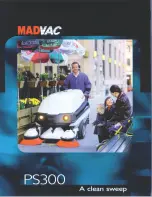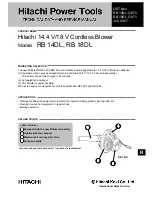
19
Start the engine as follows:
1. Check the oil level. See the “Check/Add Oil” section in the ENGINE
MANUAL.
2. Make sure equipment drive controls are disengaged.
3. Push the ON /OFF switch (A
A, Figure 18) to the ON position.
Starting Engine
Figure 18
4. Insert the safety key (A
A, Figure 19) into the safety key slot and push
fully in to the RUN position.
5. Turn the choke knob (B
B) fully clockwise if engine is cold.
NOTE: Do not use the choke to start a warm engine.
6. Push the primer button (C
C) two times.
NOTE: Do not use the primer to start a warm engine.
NOTE: Ensure that electric extension cord is removed from the
power receptacle.
FILL THE FUEL TANK
This engine is certified to operate on gasoline. Exhaust Emission Control
System: EM (Engine Modifications).
Fill the fuel tank with fresh, clean, unleaded regular, unleaded premium, or re-
formulated automotive gasoline with a minimum of 85 octane along with a
fuel stabilizer (follow instructions on fuel stabilizer package). D
DO NOT use
leaded gasoline. We recommend that fuel stabilizer be added to the fuel
each time that gasoline is added to the fuel tank.
NOTE: Winter grade gasoline has higher volatility to improve
starting. Be certain container is clean and free from rust or
other foreign particles. Never use gasoline that may be stale
from long periods of storage in the container.
CAUTION: DO NOT use gasoline containing any
amount of alcohol as it can cause serious damage to
the engine or significantly reduce the performance.
START THE ENGINE
Be sure that engine oil is at FULL mark on the oil fill cap/dipstick. The snow
thrower engine is equipped with an A.C. electric starter and recoil starter. Before
starting the engine, be certain that you have read the following information.
If engine floods, set the choke to the OPEN/RUN position and crank until the en-
gine starts.
WARNING: The electric starter is equipped with a
three−wire power cord and plug designed to operate on AC
house hold current. The power cord must be properly
grounded at all times to avoid the possibility of electric
shock which can cause injury to the operator. Follow all
instructions carefully as set forth:
Make sure your house has a three−wire grounded system.
If you are not sure, ask a licensed electrician. If your house does
not have a three−wire grounded system, do not use this electric
starter under any condition.
If your house has a three−wire grounded system but a three-hole
receptacle is not available to connect the electric starter, have a
three−hole receptacle installed by a licensed electrician.
WARNING: To connect power cord, always connect the
power cord first to the switch box located on the
engine and then plug the other end into a three−hole
grounded receptacle.
WARNING: To disconnect the power cord, always
unplug the end connected to the three−hole grounded
receptacle first.
WARNING: Gasoline is flammable. Always use caution
when handling or storing gasoline. Turn engine off and
let engine cool at least two minutes before removing the gas
cap. Do not add gasoline to the fuel tank while snow thrower
is running, hot, or when snow thrower is in an enclosed area.
Keep away from open flame, electrical sparks and DO NOT
SMOKE while filling the fuel tank. Never fill the fuel tank
completely; but fill the fuel tank to within 1-1/2 inches (3.8
mm) from the top to provide space for the expansion of the
fuel. Always fill fuel tank outdoors and use a funnel or spout
to prevent spilling. Make sure to wipe up any spilled fuel
before starting the engine.
Store gasoline in a clean, approved container, and keep the
cap in place on the container. Keep gasoline in a cool well
ventilated place; never in the house. Never buy more than a
30 day supply of gasoline to assure volatility. Gasoline is
intended to be used as a fuel for internal combustion engines;
therefore, do not use gasoline for any other purpose. Since
many children like the smell of gasoline, keep it out of their
reach because the fumes are dangerous to inhale, as well as
being explosive.
A
OPERATION
Not
for
Reproduction














































